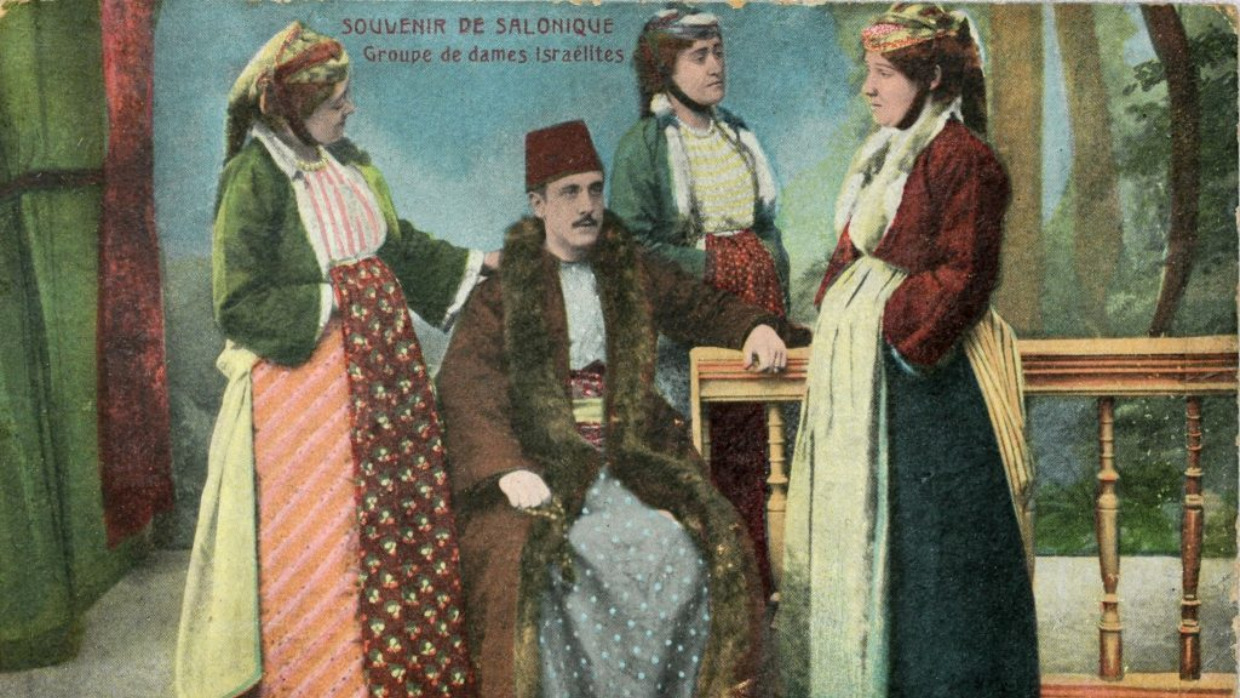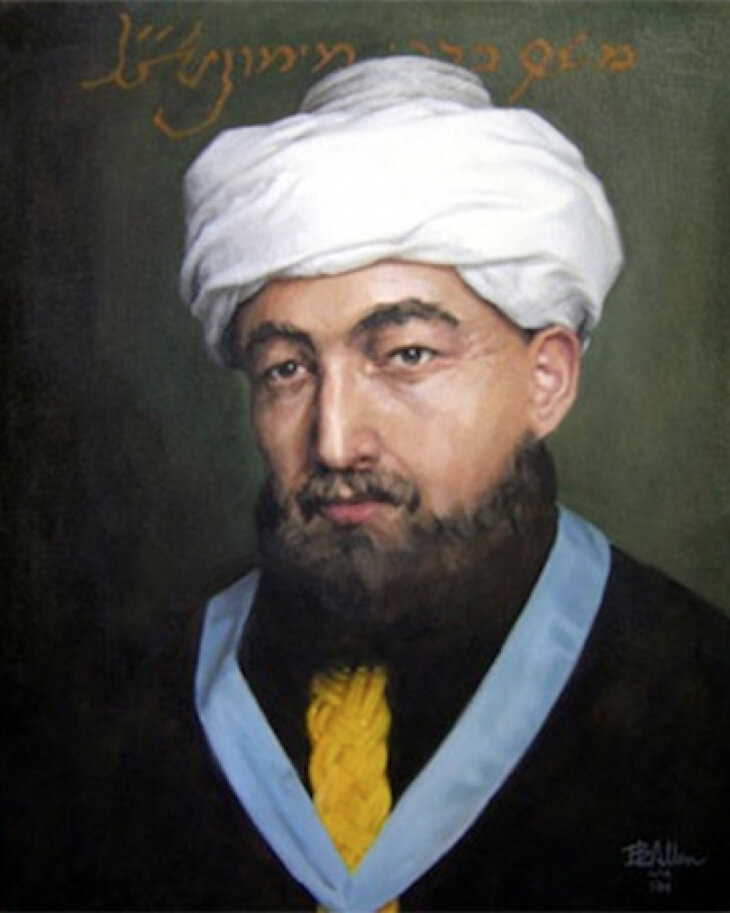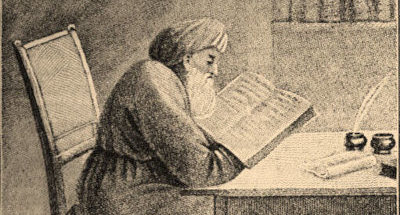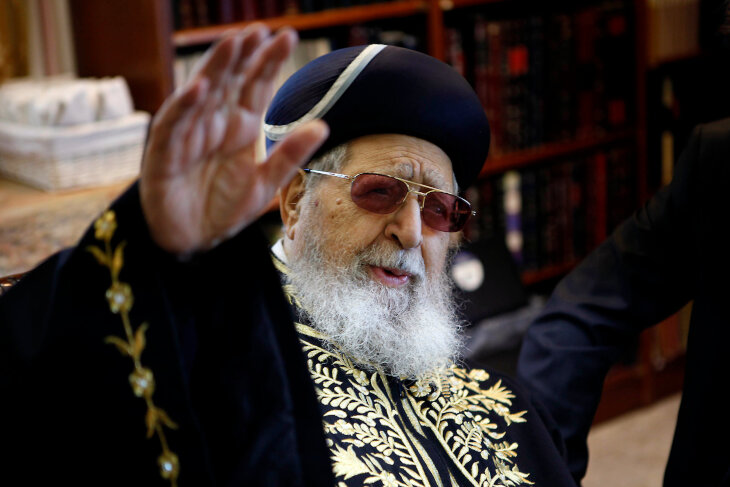 Bondi Was a Jihadist Attack — Not an Isolated Hate Crime
Bondi Was a Jihadist Attack — Not an Isolated Hate Crime

Jewish Geography

Jewish Geography
11 min read
A look at Sephardi history, culture, and more.
The term, “Sephardic Jews,” technically refers to the descendants of the great Jewish community of Spain—infamously exiled in the late 15th century—except that like most things relating to the long, difficult history of diaspora Jewry, it isn’t that simple.
Starting with the early years of the Israeli state, the term, “Sephardi,” has often been conflated with the term, “Mizrahi,” which refers to Jews of Eastern, or more specifically not-Western, descent. In modern usage, “Sephardi,” depending on context, is used when speaking about Jews who follow Sephardic religious practice and customs, and indicates most of the Jewish world that didn’t develop in Europe.
The Jews of Spain, following the Spanish Inquisition and expulsion of 1492—and following hundreds of years known as the “Golden Age of Spanish Jewry,” a time of significant scholarly, literary, and cultural development—resettled in Jewish communities in Europe, North Africa, and throughout the Ottoman Empire, which, from a modern perspective, only further confuses the distinction between Sephardi, and those now considered “Mizrahi” Jews.
The Hebrew term, Sepharad (ספרד), which nowadays means Spain, is from the biblical book of Obadiah (1:20), and is a reference to Jewish exiles returning to Israel from far-flung places like Zerefath (צרפת)—which could be modern-day France, or a Phoenician city in what would today be on the Lebanese coast—and Sepharad. According to some opinions, like the great medieval biblical commentator Rashi (Rabbi Shlomo Yitzhaki 1040-1105), Sepharad is indeed Spain, although others suggest it’s an ancient Sardinian city.1 According to the Ibn Ezra (Rabbi Abraham ibn Ezra 1089-1167), the “Sepharad” mentioned in Obadiah 1:20 is a prophetic reference to the Jews who would flee to the Iberian Peninsula after the Roman destruction of Jerusalem in the year 70.
While the exact date that Jews first arrived in Spain is unknown, a number of Jewish sources indicate that Jews had already settled on the Iberian Peninsula in Roman times, and that many others fled there—or were sent there as slaves—following the Roman destruction of Jerusalem in the year 70.2 Jewish life in Spain was difficult under Roman and subsequent Visigoth rule, but improved following the Muslim conquest—led by the Moorish, or Berber, leader Tarik (Tariq ibn Ziyad)—in 711.
The Golden Age of Spanish Jewry is a period that begins within a century or two after the Muslim conquest of Spain, and that lasts until some point within the 11th century, although specific dates are difficult to ascertain. Despite Jewish status as dhimmi, or second-class citizens in Islamic societies—scholars argue as to the extent that label hampered Jewish life during this period—Jewish cultural, economic, and spiritual life flourished. Some of the many notable Jewish personalities who lived at this time include the poet and philosopher, Rabbi Judah HaLevi; the rabbi and poet, Abraham ibn Ezra; the famed physician, Hasdai ibn Shaprut; the rabbi and author, Bahya ibn Paquda; and many others.
The Granada Massacre, which took place on December 30, 1066, in which an estimated 4,000 Jews were murdered, is considered by some to be the end of Spain’s Golden Age. But the community did continue to flourish, although other hardships, like the invasion of the hostile, anti-Jewish Almohad Caliphate in the 12th century, ultimately mark the period’s end.
One family forced to flee in response to the Almohad invasion was that of Moses Maimonides (he was 13 years old at the time), who eventually settled Fustat, Egypt, which is now a part of Cairo.
As Christians began to regain control of Spain, they took vengeance against local Muslims, and persecuted the Jewish community as well. Anti-Jewish violence peaked in 1391 in the Castile region where Jews were ordered to convert to Christianity or face certain death. While thousands opted to convert, an estimated tens of thousands of Jews were murdered throughout the region.
But that was only the beginning. In the late 1400s, following the marriage of Ferdinand V and Isabella I in 1469, which unified Spain, an Inquisition was established (in 1478) to root out Chrstian heretics, although its primary focus was “insincere” Jewish converts to Christianity. In 1492, Ferdinand and Isabella issued an Edict of Expulsion, and threw the Jews out of Spain. An estimated 200,000 Jews left—penniless, after being forced to leave their possessions and vast holdings behind—and resettled in Europe, North Africa, and throughout the Ottoman Empire. An estimated 60,000 Jews stayed behind, and converted to Christianity.
The Jewish communities of North Africa and the Middle East represent the most ancient diaspora communities, with, in some cases, roots dating back to biblical times. Many of these Jews have no connection to Spain, although in modern times are nevertheless considered “Sephardic Jews,” in that they follow Sephardic religious customs and practice. While these Jews did live in peace at times with their non-Jewish neighbors, they also suffered myriad indignities and horrors, especially following the Arab conquest in the seventh and eighth centuries—at its peak, Arab influence stretched from Portugal to India—and the region’s subsequent conversion to Islam.
Under Islamic law, Jews were considered dhimmi, or de facto second-class citizens: they had to pay a special tax, called jizya, that demonstrated their subordination; they couldn’t testify against a Muslim in court; they had to yield to a Muslim in public; their homes and places of worship could not be taller than those of Muslims; and more. Jews also suffered centuries of persecution including being forced to wear items that distinguished them as Jewish; government-decrees calling for the destruction of synagogues; arbatry confiscations of property; forcible attempts to convert them to Islam; anti-Jewish riots; and pogroms.
 A dhimmi petitioning the Ottoman sultan
A dhimmi petitioning the Ottoman sultan
Many of these Jewish communities came to an end following Israel’s independence in 1948. An estimated 850,000 Jews from throughout the Muslim world were forced to flee their homes—often leaving behind most of their possessions, property, and community buildings—in the face of anti-Jewish riots, pogroms, and government policies, with the bulk of the evacuees immigrating to Israel in the state’s first two decades.
Sephardic Jewish communities throughout Europe, some of which were founded in the aftermath of the Spanish Inquisition and expulsion; those in former Ottoman lands like Bulgaria and Yugoslavia; as well as Sephardic communities in places like Italy and Greece, suffered a similar fate to that of other Jews at the hands of the Nazis. Although, depending on circumstances, some communities fared better than others. In general, the Jews of North Africa, while discriminated against, were not sent to death camps or rounded up for extermination.
A significant percentage of Israel’s Sephardic community are the descendants of Jews forced from their homes in Arab lands, who arrived in Israel during the first two decades after the state’s founding in 1948. The Israeli government does not keep statistics that categorize Israelis as Sephardi, Mizrahi, (or Ashkenazi, etc), although the Sephardic community is estimated to comprise about half of Israel’s current population.
Numerous important Jewish leaders and scholars come from the Sephardi community. Here are just a few.
 Rabbi Moses Maimonides (1135-1204), often referred to as Rambam (the Hebrew acronym of his name, Rabbi Moses, the son of Maimon, רמב׳ם), was born in Cordoba, Spain, but was forced to flee at the age of 13 following the Islamic Almohad invasion. He spent time in Fez, Morocco, where he studied medicine, before finally settling in Fustat, Egypt, in what is now modern-day Cairo. He served as the court physician to the sultan, Saladin, as well as chief rabbi of Cairo. He was a prolific author, letter writer, thinker, and philosopher; and wrote numerous works in Hebrew and Arabic. His most important work is the Mishnah Torah, which is a 14-volume encyclopedia of Jewish law that follows his categorization of the Torah’s 613 commandments.
Rabbi Moses Maimonides (1135-1204), often referred to as Rambam (the Hebrew acronym of his name, Rabbi Moses, the son of Maimon, רמב׳ם), was born in Cordoba, Spain, but was forced to flee at the age of 13 following the Islamic Almohad invasion. He spent time in Fez, Morocco, where he studied medicine, before finally settling in Fustat, Egypt, in what is now modern-day Cairo. He served as the court physician to the sultan, Saladin, as well as chief rabbi of Cairo. He was a prolific author, letter writer, thinker, and philosopher; and wrote numerous works in Hebrew and Arabic. His most important work is the Mishnah Torah, which is a 14-volume encyclopedia of Jewish law that follows his categorization of the Torah’s 613 commandments.
Rabbi Moses Nachmonides (1194-1270), often referred to as Ramban (the Hebrew acronym of his name, Rabbi Moses, the son of Nachman, רמב׳ן), is from Girona, Spain, and was a leading Catalonian Jewish leader and thinker. His commentary on the Torah, written near the end of his life, often draws from Kabbalah to explain various concepts and ideas, and is considered one of the earlier mystical texts to be published. In 1263, the king, James I of Aragon, called upon him—as Catalonia’s chief rabbi—to defend Judaism in a series of debates. He won the debate, and the king is reported to have said that “he had never encountered a man who, while being so wrong, argued so well for his position,” but, ultimately, was sent into exile. He settled in Israel, and spent the last years of his life in Jerusalem.
 Rabbi Isaac Alfasi (1013-1103), often referred to as the RIF (the Hebrew acronym of his name, Rabbi Isaac Alfasi, רי׳ף), spent much of his life in modern-day Algeria. He was a leading legal authority, and his opinions helped form the basis for Rabbi Yosef Caro’s Code of Jewish Law.
Rabbi Isaac Alfasi (1013-1103), often referred to as the RIF (the Hebrew acronym of his name, Rabbi Isaac Alfasi, רי׳ף), spent much of his life in modern-day Algeria. He was a leading legal authority, and his opinions helped form the basis for Rabbi Yosef Caro’s Code of Jewish Law.
 Rabbi Yosef Caro (1488-1575), was born in Toledo, Spain, but was expelled with his family in 1492. In later years, he settled in the northern Israeli city of Tzfat, which was then under Ottoman rule. He was an important rabbi and prolific author, his most important work being the Shulchan Aruch, or Code of Jewish Law.
Rabbi Yosef Caro (1488-1575), was born in Toledo, Spain, but was expelled with his family in 1492. In later years, he settled in the northern Israeli city of Tzfat, which was then under Ottoman rule. He was an important rabbi and prolific author, his most important work being the Shulchan Aruch, or Code of Jewish Law.
 Rabbi Ovadia Yosef (1920-2013), was born in Baghdad, Iraq, but moved to Jerusalem, which was then under British control, at the age of four. He was a prolific author, important leader, and spiritual guide for the Sephardic/Mizrahi community in Israel. He served as Israel’s chief rabbi from 1973-1983, and founded the Shas political party in 1984. Beloved in his lifetime, an estimated one million people attended his funeral in 2013.
Rabbi Ovadia Yosef (1920-2013), was born in Baghdad, Iraq, but moved to Jerusalem, which was then under British control, at the age of four. He was a prolific author, important leader, and spiritual guide for the Sephardic/Mizrahi community in Israel. He served as Israel’s chief rabbi from 1973-1983, and founded the Shas political party in 1984. Beloved in his lifetime, an estimated one million people attended his funeral in 2013.
Sephardic music is diverse, and varies depending on point of origin. For example, the vocal music of Yemen sounds very different from the instrumental and orchestrated works from Iraq, which in turn are distinct from the life-cycle melodies sung by Moroccan Jewish women. One somewhat common feature is the influence of Ottoman classical music—which dominated most of the Arab world for hundreds of years—particularly the use of maqams, which, at least to western ears, sound like a type of modal system for tonal arrangement. Contemporary Sephardic artists include Neta Elkayam, Shai Tsabari, A-WA, and Dudu Tassa.
Similar to Yiddish, Ladino is a Spanish-based Jewish language that incorporates Spanish, Arabic, Hebrew, and Talmudic Aramaic. It’s still spoken in some Sephardic Jewish communities. The most well-known work written in Ladino is the Me'am Lo'ez, which was started by Rabbi Yaakov Culi in 1730, and finished by others after his death. A massive work, it follows the order of the weekly Torah reading, and draws from myriad rabbinical sources.
The terms “Mizrahi” and “Sephardi” are often conflated. “Sephardi” technically refers to Jews from Spain, but in modern usage refers to Jews who follow Sephardic religious practice and customs, which applies to most of the Jewish world that didn’t develop in Europe. “Mizrahi” means “eastern Jews,” which, at least when the term was coined, was a pejorative, and referred to recent Jewish arrivals to Israel from throughout North Africa and the Middle East, although it’s since been embraced.
 Ketubbah, Istanbul, Turkey, 1853. (Courtesy of The Israel Museum, Jerusalem.)
Ketubbah, Istanbul, Turkey, 1853. (Courtesy of The Israel Museum, Jerusalem.)
But the actual usage of the terms is confusing. For example, a Jew from Iraq is both Mizrahi, in terms of his cultural heritage, but Sephardi in terms of the religious laws and traditions he follows. However, since “Mizrahi” is a term that carries more socio-political weight in Israel, that same Jew—who identifies as “Mizrahi” in Israel—is more likely to identify as “Sephardi” if he was raised somewhere else.

How was RIF Sefaradi? His line is from Babylonian Geonim, he never set foot in Spain. That's like saying the Ashkenazi, German-born ROSH is Sefaradi because Beith Yosef greatly weighed his opinion in halakha. "“Sephardi” technically refers to Jews from Spain, but in modern usage refers to Jews who follow Sephardic religious practice and customs, which applies to most of the Jewish world that didn’t develop in Europe." Last time I checked, Spain was in...EUROPE! "Mizrahi" has meant "Eastern" for thousands of years & not "coined" recently. Just many of the "elitists" of the Israel in the 1950s looked upon them negatively, making the term pejorative. Yemenites are not Sefaradim. See R. Abba Shaul. R. 'Ovadiyah Yosef TRIED to merge all non-Ashkenazim to follow Sefaradi minhag.
Thanks for your comment. Although our list is not exclusively a list of Spanish rabbis, the RIF spent the final years of his life as a Rav in the Cordoba region of Spain where he died (in 1089) and may be buried. Prior to that, he spent many years as the head of a yeshiva in Fez, Morocco (he's originally from modern-day Algeria). He's considered a leading figure in the development of the Sephardic method of Talmudic study, and is one of the Sephardic sources Rabbi Yosef Caro used when compiling the Shulchan Aruch. For a thorough overview of the history and development of the Mizrahi community, see our article, "Who is a Mizrahi Jew." Hope that helps.
If you are counting RIF as SEFARADI because "R. Yosef Caro used when compiling the Shulchan 'Arukh," then, as I said above, you'd have to have to count Ashkenazi ROSH for the same reason.
No. I am counting the RIF as Sephardi because he was born in Algeria, spent most of his life as a Rosh Yeshiva in Fez, Morocco, and died as the rav of a community in the Cordoba region of Spain. Also, as I mentioned, he is considered a leading figure in the development of the Sephardic method of Talmudic study (as opposed to Rashi and the Baalai Tosfos, etc). Thanks again for commenting.
Algeria & Fez were Mizrahi then, not Sefaradi. He died as rav in Spain. ROSH was born in Germany & died as rav in Spain, does that make ROSH Sefaradi??? RIF & ROSH were BOTH leading figures in Sefaradi pesaq (though not in methodology) & the ROSH was the summation of Ba'alei Tosefoth as the chief disciple of R. Meir from Rotenberg, Germany (considered the last of the Ba'alei Tosefoth). RIF & ROSH are the same, EXCEPT in methodology, yet pashtan Rambam & RIF are also DIFFERENT in methodology, despite RIF being Rambam's father's rebi. RIF gave pesaq, Rambam discussed his pesaq, so how is RIF's approach represented in Sefaradi methodology?